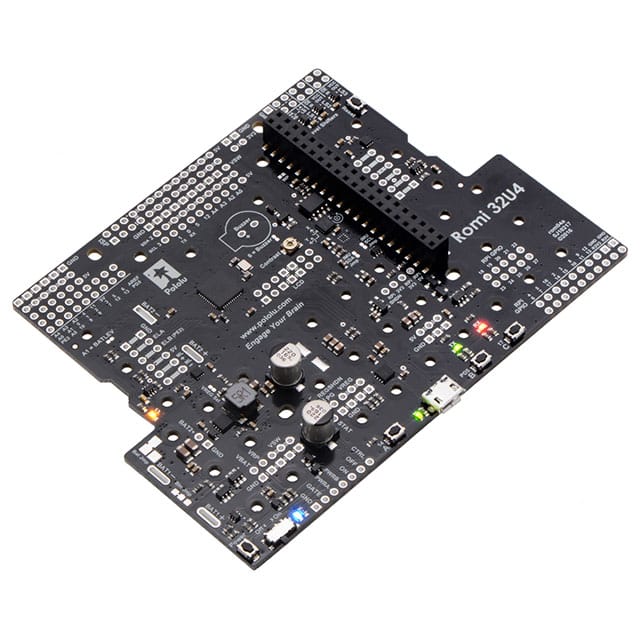Ⅰ. Development Boards, Kits, Programmers
Ⅱ. Mechanical Features of Development Boards, Kits, Programmers
Ⅲ. Electrical Characteristics of Development Boards, Kits, Programmers
Development boards, kits, and programmers are essential tools for electronic engineers, hobbyists, and makers who are involved in hardware development projects. These tools simplify the process of prototyping, testing, and programming hardware designs.

Development boards are complete circuit boards that are designed to help users create hardware projects quickly and efficiently. These boards usually include a microcontroller or processor, input/output interfaces, and other necessary components for the development of a particular project. Development boards are useful for those who are new to hardware development or those who want to prototype quickly without having to design and assemble every component from scratch. Examples of development boards include the popular Arduino boards, Raspberry Pi boards, and STM32 development boards.
Development kits provide additional hardware and software components that work together with a development board. Kits may include sensors, actuators, motors, and other components that can be used to prototype a specific project. A development kit is ideal for those who want to build a specific project and need additional hardware components that are compatible with a particular development board.
A programmer is a device used to transfer code from a computer to a microcontroller or other programmable device. Programmers are essential tools for those who need to program firmware or bootloader onto the microcontroller or other programmable device. Some development boards include an onboard programmer, while others require a separate programmer to be used.
In summary, development boards, kits, and programmers are essential tools that simplify the hardware development process. These tools can help electronics engineers, hobbyists, and makers to create prototypes and projects quickly and efficiently.
Mechanical Features of Development Boards, Kits, Programmers
Although development boards, kits, and programmers are primarily focused on their electronic features and capabilities, there are also some mechanical features that are worth considering. Here are some common mechanical features to look out for:
Size and Form Factor: Development boards come in various sizes and form factors, ranging from small and compact to large and more complex. It's important to consider the size and form factor of the board and how it will fit into your project, as well as any additional components that will be required.
Mounting Holes: Mounting holes are essential if you plan to mount the development board inside a project enclosure or on a surface. Ensure that the board has mounting holes in the correct positions, and that they are compatible with the size and type of screws you plan to use.
Connectors: Development boards often come with a variety of connectors, including headers, USB ports, and power jacks. Consider the type and number of connectors required for your project, and ensure that they are compatible with other components that you plan to use.
Power Supply: Development boards require a power supply to operate, and the type of power supply required will depend on the board's specifications. Some boards can be powered directly via USB, while others require a separate power supply or battery. Ensure that you have the correct power supply for your board.
Environmental Conditions: Depending on your project, the development board may be exposed to harsh environmental conditions, such as heat, moisture, or vibration. In such cases, ensure that the board is rated for the conditions it will be exposed to and is properly protected.
In summary, while electronic features are the primary consideration when selecting development boards, kits, and programmers, it's important to consider the mechanical features as well. These features can impact the board's suitability for your project and help ensure that it will be durable and reliable.
Electrical Characteristics of Development Boards, Kits, Programmers
When selecting a development board, kit, or programmer, it's essential to consider the electrical characteristics of the tool. Here are some common electrical characteristics to look out for:
Microcontroller: The microcontroller is the heart of the development board and determines its capabilities. Consider the type of microcontroller and its specifications, such as its clock speed, number of pins, and amount of memory.
Operating Voltage: Development boards require a specific operating voltage to function correctly. Ensure that the board's operating voltage matches the voltage of the other components in your project, or that the board can support the required voltage range.
Current Consumption: The current consumption of the development board is important to consider, as it can impact the size and type of power supply required. Ensure that the board's current consumption is within the limits of your power supply or battery.
Input and Output Pins: The input and output pins on the development board determine its connectivity options. Consider the number of pins available and the type of pins, such as digital or analog, and ensure that they are compatible with the sensors, actuators, and other components in your project.
Communication Interfaces: Development boards often come with communication interfaces, such as UART, SPI, and I2C, which allow them to communicate with other devices. Ensure that the board has the required communication interfaces for your project.
Peripherals: Some development boards come with built-in peripherals, such as sensors, LCD displays, or SD card slots. Consider the type and number of peripherals required for your project, and ensure that the board has the necessary built-in peripherals or the capability to add external peripherals.
In summary, when selecting a development board, kit, or programmer, it's important to consider its electrical characteristics, including the microcontroller, operating voltage, current consumption, input and output pins, communication interfaces, and peripherals. These characteristics can impact the board's suitability for your project and its ability to communicate with other devices and components.
标签:kits



